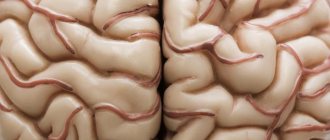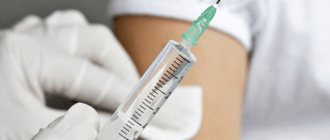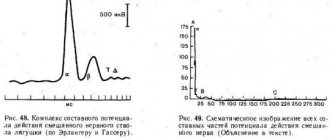Poliomyelitis is a highly contagious viral disease that causes paralysis of the arms, legs, and breathing, and can also cause death. Poliomyelitis pathogens penetrate the oral mucosa mainly through contaminated water. Infection by airborne droplets is also possible.
Poor hygiene conditions favor transmission. The incubation period ranges from 3 to 35 days. After a person gets sick, he develops lifelong immunity (protection against infection) to one viral type (but there are polioviruses types 1, 2 and 3). Only vaccination completely protects against infections of all three types. You can get vaccinated against polio at the RebenOK clinic at the best prices in Moscow.
Why is polio dangerous?
Most infections (>95%) are asymptomatic, but antibodies are produced. If there are signs of illness, there are different pictures of the disease:
· Abortive polio: inflammation of the gastrointestinal tract (gastroenteritis), fever, nausea, sore throat, muscle pain and headaches without central nervous system involvement.
· Non-paralytic poliomyelitis (aseptic meningitis): inflammation of the meninges without paralysis.
· Paralytic polio (1 in 200 infections) with typical symptoms of paralysis: independent breathing may become impossible and lifelong use of mechanical ventilation may be required. Paralysis can also lead to death.
Even decades after infection, post-poliotic syndrome may occur. There is no cure for polio. Only symptomatic therapy is prescribed to eliminate discomfort.
Symptoms
The incubation period lasts 8-12 days, but can range from 5 to 35 days.
Acute poliomyelitis occurs in different clinical forms, and the symptoms of the disease are represented by the following syndromes:
- intoxication syndrome;
- catarrhal syndrome;
- digestive tract disorder syndrome;
- syndrome of neurological disorders.
Poliomyelitis begins from the preparalytic stage:
- sudden increase in temperature,
- the appearance of a runny nose, sore throat, cough,
- as well as diarrhea or constipation,
- abdominal pain, vomiting.
Neurological impairment syndrome is characterized by
- headache,
- lethargy, fatigue,
- increased sensitivity of the skin,
- drowsiness,
- tremor,
- convulsions,
- pain in the spine and limbs.
This stage continues for 5 days. Then the disease passes into the paralytic stage:
- the temperature drops,
- muscle pain disappears,
- paresis and paralysis occur.
More often the lower limbs are involved in the process, less often the muscles of the trunk, abdominal muscles, and respiratory muscles.
After 7-14 days, muscle atrophy and joint dislocations develop.
The recovery stage lasts 4-6 months, then the healing process slows down, leaving muscle atrophy and contractures (muscle contractions).
Residual effects or the residual stage are characterized by the presence of persistent paralysis, contractures, deformation and shortening of the limbs, and curvature of the spine. Residual effects lead to lifelong disability.
During polio outbreaks, the mortality rate of patients reaches 2-5% from respiratory arrest due to paralysis of the respiratory muscles.
Types of vaccines
Various vaccines are available, which are administered by a doctor using a syringe in several single doses. Polio vaccination for infants is often combined with other vaccines. The combination vaccine is distributed over four single doses: the first is given to infants at the age of 3 months, the last - in the second year of life.
Types of polio vaccines:
· Vaccination with OPV (oral polio vaccine).
It comes in the form of drops and contains weakened forms of two types of viruses. Passive immunity is produced in the intestines.
· Vaccination IPV (inactivated vaccine).
It has the form of a homogeneous suspension, available in disposable 0.5 ml syringes. It contains three types of “dead” viruses.
OPV is cheaper. The drug is produced in Russia and has good reviews. Inactivated polio vaccine is an imported product. The drugs have certain differences and have their own side effects and positive aspects.
The RebenOK clinic uses several drugs. Names of the polio vaccine:
· "Pentaxim". Designed for children from three months of age. The national vaccination schedule involves three injections with an interval of one and a half months and further revaccination after a year. The second revaccination (fifth administration of the drug) is carried out with OPV or IPV.
· "Bivouac Polio". Live polio vaccine, which consists of three doses of a weakened oral vaccine and two doses of an inactivated vaccine. It is carried out in the first year of life. Booster vaccination against polio is carried out one year after receiving the first dose.
· "Infarix Hexa". A combined drug that does not have strict preparation requirements. The vaccine is effective against polio, tetanus, diphtheria, whooping cough, Haemophilus influenzae, and hepatitis B.
· "Polimilex". A single drug that is widely used for the prevention of polio. Injected subcutaneously or intramuscularly. The drug is “dead”, so it cannot cause the development of the disease.
The choice of drug remains with the doctor. Many experts prefer to use combination vaccines. If a child has contraindications, then single medications are prescribed.
Advantages and disadvantages
Polio vaccination is usually given in infancy as part of basic immunization, along with the other five routine vaccinations. Poliomyelitis is a serious infectious disease, which in its development stage leads to disability if the gray matter of the spinal cord is damaged. Benefits of polio vaccination:
· allows you to avoid infection and prevent disability, skeletal deformities and paralysis;
· the vaccinated person develops immunity from the disease, so even if infected, the child will tolerate the disease much easier;
· Adverse reactions after vaccination are mostly absent.
Many believe that the vaccine has shortcomings that result in the development of the disease polio. But the probability of such an outcome is no more than 1 case in 2.7 million people.
Vaccination is not dangerous to the life and health of the child. The goal is to protect against future infection by creating a barrier against infection. The most harmless is the inactive vaccine.
Adverse reactions
The combination polio vaccine, often used in infants, is generally well tolerated. There may be redness or painful swelling at the injection site. Allergic reactions are also possible.
As the immune system reacts to the vaccine, it may temporarily cause various illnesses. These include, for example:
· headaches and aches;
· gastrointestinal discomfort;
· fever and fatigue;
· irritability and chills.
These vaccination reactions usually resolve on their own within 1-3 days.
Is there a fever after vaccination?
Children may develop a fever after receiving the polio vaccine. This reaction is considered normal and indicates that the body has begun to produce antibodies necessary to fight the virus. A slight increase in body temperature is observed in 1-4% of patients. The temperature may rise to 37.5-38.6 degrees. If the readings exceed a moderate level, then you should take an antipyretic drug.
How many vaccinations are given against polio?
The Russian national vaccination calendar provides the following polio vaccination schedule:
· in the 1st year of life – at 3,4,5 and 6 months;
· in the 2nd year of life – at 18 and 20 months;
· at the age of 14 – once.
In accordance with the Russian calendar, the first two vaccinations are carried out with IPV, the third – with OPV. The vaccination course involves the use of only inactivated vaccines. When two doses of OPV are administered, it is possible to provide high local protection in the intestine. With continued use of live vaccines, the risk of developing vaccine-associated poliomyelitis is reduced.
Causes
The causative agent of polio is three types of poliovirus. The source of infection is patients and virus carriers.
The virus is transmitted by the fecal-oral and airborne routes.
In tropical countries, cases of the disease are recorded throughout the year, in countries with temperate climates more often in summer and autumn.
Factors contributing to the spread of the virus:
- failure to comply with personal hygiene rules (dirty hands);
- poor removal of excrement;
- poor sewerage;
- contaminated food (unwashed vegetables and fruits) and water (including swimming in contaminated bodies of water);
- house flies.
Tips for parents
If a child often has allergic reactions or is allergic, then vaccination is possible only during the period of remission. There is no need to use any medications before administering the vaccine.
If your child experiences the following symptoms after vaccination, you should consult a doctor:
· appearance of signs of acute respiratory infections (runny nose, cough, etc.);
· dysfunction of the gastrointestinal tract;
· shortness of breath, decreased muscle tone of the limbs.
We are talking about signs of vaccine-associated polio, which may appear 4-30 days after OPV administration. A visit to the pediatrician is necessary if there is an irregular heartbeat, urticaria or severe headaches.
After vaccination, it is recommended to avoid visiting crowded places. The child should be given more purified water to drink, and allergenic foods should be excluded from the diet.
What to do after vaccination to minimize the risk of complications?
The rules of conduct are quite simple, but following them allows you to significantly reduce the risk of post-vaccination complications:
- You should not take water procedures on the day of the injection. After OPV, you can swim, but not where there is a risk of catching a cold (swimming pool, open water, etc.);
- walking with a child is allowed, but not in crowded places, since it is easy to catch an infection;
- visiting public places (cafes, cinemas, shopping centers and others) should be postponed for at least a week. During this period, it is better not to invite guests to the house. It’s great if the child does not attend children’s groups (kindergarten, school, clubs);
- If you have received a live vaccine (OPV), you should not eat or drink anything for one hour after it. After the injection, such a prohibition is not relevant;
- New products should not be introduced into the menu within a week after vaccination. Moreover, this applies not only to children - vaccinated teenagers and adults; you should also not experiment and try exotic dishes. This will reduce the risk of an allergic reaction;
- Sometimes children try to scratch the itchy injection site. Clothes made from natural fabrics that cover the skin will help to avoid this. As a last resort, applying a clean gauze bandage is acceptable;
- famous pediatrician E.O. Komarovsky advises keeping the child on a diet for 24 hours after vaccination, that is, feeding him exclusively light and low-calorie foods that are well digested. It is worth offering dishes in smaller quantities than usual.
It is necessary to carefully monitor the condition of the person who has been vaccinated. It is important to know not only normal reactions to a particular vaccine, but also to be able to distinguish them from phenomena that require immediate medical attention.
Warning for the unvaccinated
The stated goal of the World Health Organization (WHO) is to eradicate polio, and Russia is also committed to this goal. However, polio is still found in Pakistan, Afghanistan or Nigeria and can also be carried by tourists into the Russian Federation. Therefore, polio vaccination is still recommended, important and necessary.
Everyone should be vaccinated against polio, ideally as early as infancy. People who were not vaccinated as children, or whose vaccination status is unknown, should catch up on polio vaccination.
"Wild" alien
Polio was a real scourge among the inhabitants of Europe and North America until the 50s of the last century, when scientists finally created an effective vaccine
against it.
It is believed that polio was almost completely eradicated in the Soviet Union by 1961. However, in 2010, the largest outbreak of polio
- more than 700 people fell ill, and 26 of them died.
The virus penetrated across the border into Russia, which was until now considered a country free from this disease. The so-called wild strain
of the virus, characteristic of India, Pakistan and Afghanistan, is rampant.









